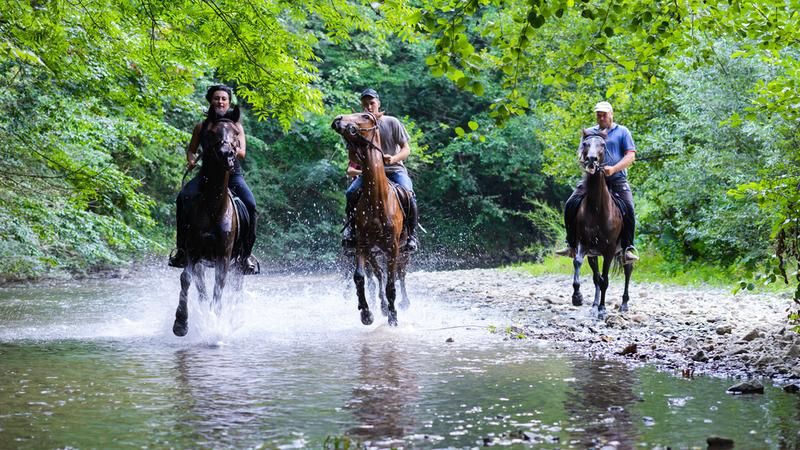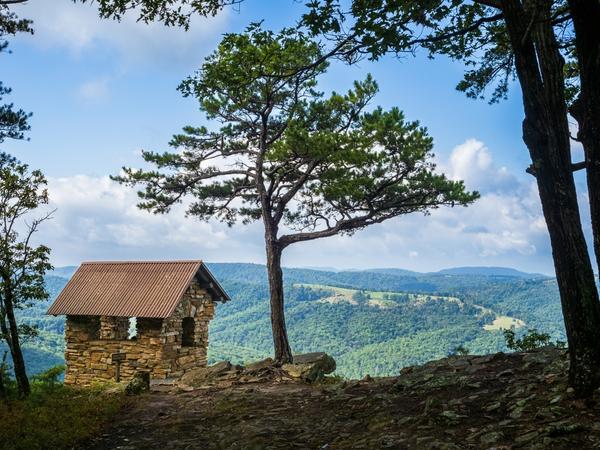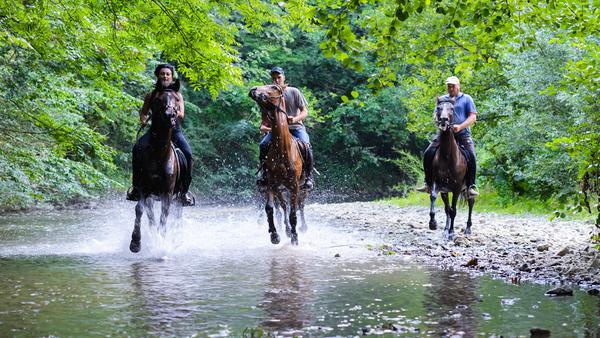A Traveler’s Guide to Lost River, WV

Nestled within the picturesque eastern panhandle of West Virginia, the Lost River area is a tranquil haven characterized by its softly undulating mountain peaks and lush, scenic forests.
To help you navigate this hidden gem, we’ve crafted a detailed guide that reveals the best activities, destinations, and sights to explore. Delve into the wonders of this often-overlooked region and stay at Blue Maple for convenient access to all that Lost River has to offer!
About the Quiet West Virginia Gem: Lost River
The Lost River area is home to several small towns and a state park. The first European presence here dates back to the 1700s when Quaker families settled the area after crossing through the Shenandoah Valley. A young George Washington surveyed the region before the state of West Virginia even came into existence.
Though Lost River was initially fraught with conflict between white settlers and Native Americans, that didn’t stop more pioneers from arriving in even larger numbers over the following century. Those settlers went on to establish brick and log cabin houses, a tannery, and a grist mill.
Today, the Lost River area is known for its close proximity to outdoor recreation and its scenic beauty.
Best Things to Do in Lost River
On that note, you can participate in a number of different activities during a visit to Lost River. Here are some of our top recommendations:
Climb to Cranny Crow

The Cranny Crow overlook is located in Lost River State Park, with 10,216 acres of woods filled with striking rock formations and picturesque plains. Cranny Crow sits high above it all, providing stunning views of the Lost River area within a relatively short hike.
Nature lovers can reach Cranny Crow via several different hiking trails, but the most popular is the White Oak Trail, a moderately difficult out-and-back trek covering a little more than 4 miles total. The trail can be rocky and steep in some parts, but you’ll be glad you put in the work after you reach Cranny Crow. With a little more effort, you can even get to an abandoned fire tower nearby.
Experience Lost River Arts and Culture
Located in Hardy County’s Lost City, the Lost River Arts Cooperative showcases and sells the work of local artisans from the Lost River area. You can peruse the exhibits and pieces for sale — they’re all made locally and by hand, using crafting techniques that date back centuries.
After you’re done shopping, head next door to the Lost River Museum. The only museum in Hardy County features exhibits about bygone times in the Lost River area and artifacts from previous periods.
Adventure Into Luray Caverns

About an hour’s drive from Lost River, Luray Caverns is the biggest cavern system in the eastern U.S. Here, you’ll head deep underground to marvel at soaring stone formations and glittering natural wonders.
After you’ve explored the caverns, swing by the Shenandoah Heritage Museum, which is filled with exhibits chronicling the history of the Shenandoah Valley. Set aside time to stop by the Car & Carriage Caravan Museum or any of the many kid-friendly activities on-site.
Go Horseback Riding

Between April and October, visitors can travel through Lost River State Park on horseback. Hidden Trails Stables runs guided horseback rides six months out of the year, allowing visitors to take in the area at a slower pace and thoroughly enjoy the amazing scenery.
You can choose from several different excursions, ranging in length from 30 minutes to two hours, as well as pony rides for the little ones. As you ride, keep an eye out for wildlife like deer and bears.
Best Time to Visit Lost River
Lost River has something new to explore all year round. The scenery constantly shifts, but one thing’s certain — it’s always beautiful out here.
If you want to plan your trip for a specific time of year, read on to find out when you should drop by.
Spring
Highs are usually in the 50s at the beginning of spring, running up into the 70s and 80s by May. Lows, meanwhile, are in the 30s in early spring and the 50s in late spring. Showers are also common, so pack a raincoat.
Spring is a popular time for sporting events in Lost River, including the Lost River Trail Run and the Lost River State Park Disc Golf Tournament, both in May. The Earth Day Farm Fest also takes place in April.
Summer
The Lost River region heats up in the summer, so bring a bathing suit to cool down with a swim. You can also go rafting or kayaking on the Cacapon River, which features mild Class I and Class II rapids.
Highs are typically in the 80s and 90s throughout the season, while lows rarely get below the 70s and 60s. The local calendars are packed with summer events, like the Branch Mountain Bluegrass Festival, the West Virginia Poultry Festival, the Tri-County Fair, an Independence Day celebration, and much more. There’s even an annual rodeo right in Lost River.
Fall
Fall sees temperatures slowly but surely cooling off in West Virginia’s eastern panhandle. Highs in September will typically be around the 80s and 90s, with lows in the 50s and 60s — but by November, highs will be in the 60s, and lows will be in the 40s.
Fall also brings a show-stopping display of fall foliage, as the leaves change color all around the region. Noteworthy events include Heritage Weekend, which is celebrated throughout Hardy County, and the West Virginia Turkey Festival in Mathias.
Winter
Winter highs may start out in the 50s and lows in the 30s, but by February, highs will fall in the 40s and lows in the 20s. Snow is also a common sight at this time of year — bring your boots and coats so the weather doesn’t hold you back.
You can ring in the holidays at the Moorefield Christmas Tree Lighting and Parade in early December. Other than that, there aren’t many other events here at this time of year, so you’ll just have to entertain yourself with sledding trips and cups of hot cocoa by the fireplace. Oh, darn!
Where to Eat in Lost River
Though Lost River is fairly rural, rest assured that we’re surrounded by several excellent restaurants. Get to know our favorite spots in the Lost River district:
Bonus Travel Tips for Lost River
Though a visit to Lost River will always make for a relaxing vacation, we do have a couple of suggestions to help you have the best trip possible. Here’s what we’d recommend:
- Rent a car: Public transportation is virtually nonexistent in the Lost River area, so you’ll need a vehicle to get around. If you’re not driving in, rent a car from whichever airport you fly into.
- Pack according to the weather: Weather conditions can shift drastically in Lost River, so thoroughly check the weather forecast as you pack your bags for the trip.
- Eat local: Stop by the Lost River Trading Post in Wardensville for a taste of Lost River fare, including jams, cocktail ingredients, and spices.
Book Your Next Getaway to Lost River
Lost River is full of surprises, so you’ll have plenty to discover on your next getaway. You’ll have numerous options to complete your perfect itinerary, from climbing Cranny Crow to soaking up the sun while floating down the Cacapon River.
Book your stay at Blue Maple and get ready to check out this incredible region!